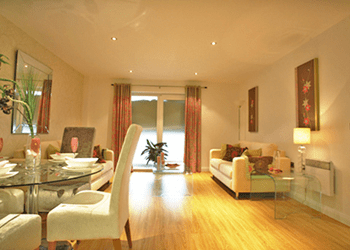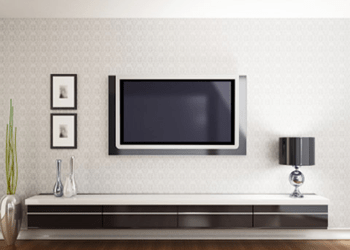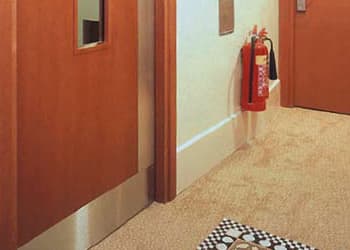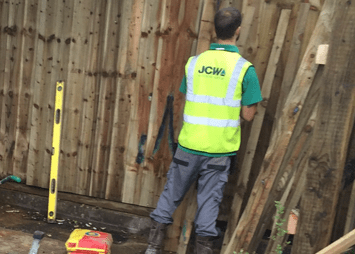Before you search, learn more about Soundproofing and Sound Absorption
To assist customers who are not sure whether they need soundproofing materials or sound absorption materials, the short definitions below will help provide a brief outline. You can also find more detailed information about sound generally on this website on the More About Sound page.
If you want to soundproof a room as fully as possible, you will almost always need to install both types of sound insulating materials.
Soundproofing
Soundproofing is all about creating an acoustic barrier. Soundproofing products are specially designed and manufactured to perform as an acoustic barrier by reducing the amount of sound entering or leaving a room.
Sound Absorption
Sound absorbers are designed to absorb the sound within a room and help to reduce the amount of reverberation or echo within the space.
If you want to soundproof a room as fully as possible, you will almost always need to install both types of sound insulating materials.
What types of sound are there?
There are two fundamental ways in which sound moves around the rooms and spaces in which you hear them:
- Airborne Sound
- Impact Sound
What is airborne sound & how to insulate against it?
Airborne sound is sound waves moving around within a space, such as a room. This sound bounces off walls and floors causing vibrations within those surfaces which will then transmit (re-radiate) to the other sides of the room (receiver space). Often the windows, doors, poorly fitted sockets or any cracks in a wall will drastically reduce its insulation of airborne sound. To reduce the amount or loudness of this sound you need to insulate it with the use of proper soundproofing materials on your walls, floors or ceilings.
What is impact sound & how to reduce it?
Impact sound starts with an incident like a door slamming or heavy footsteps which then creates vibrations directly through the walls and floors of a building, and the sound travels from one room to another. Impact sound can travel through a concrete floor; from one room to another even if the wall in between is a good airborne sound insulator. To reduce the amount or loudness of this sound you need to stop it at its source with proper soundproofing materials on your walls, floors or ceilings.
Nuisance noise within a room and how to reduce it
As well as unwanted noise coming from a separate room, noise from within one large room can also be a nuisance. Large open rooms can often become prone to echoes of noise incidents like people speaking loudly. In an open plan office or any kind of performance hall, this can be a real problem for individuals working or concentrating. Rooms that are prone to echoes (or sound reverberation) are typically large and have wall surfaces that absorb very little of the sound, therefore bouncing it back across a room. To reduce the amount or loudness of this sound you need to absorb it with proper soundproofing materials on your floors or ceilings.
How to Control Noise
Before considering soundproofing a building it is worth considering the quality and methods of construction of the building.
There are two main ways to reduce and control noise.
- Increasing Mass – the more mass (weight and density) a floor or wall has the less sound will make it vibrate. As a general rule of thumb doubling the mass will give a 5 decibel reduction in the sound transmitted.
- Additional Layers – adding several layers to the construction of a wall or floor can greatly improve the control of noise. Each layer will be made of soundproofing materials, slightly separated to reduce airborne and impact noise transfer.
How can JCW Acoustic Supplies Help?
Here is a list of common problems from our customers
1. Noisy Neighbours
Q: My neighbours are always playing music late at night and often argue loudly, my bedroom is adjacent to theirs as we live in a block of flats. How can I get some peace and quiet?
A: It sounds like your flat has relatively thin walls, which is common. For masonry walls where the problem is vocal noise (usually in the mid to high frequency range) we recommend JCW Silentboard. This product has several resilient layers to improve the sound insulation of walls.
2. Nearby Train Line Noise
Q: I live near a railway line and often at night I’m kept awake by the noise of freight trains regularly going by. What can I do to insulate my home from this noise?
A: To reduce both the impact vibration sound and the airborne sound you are experiencing in your home, we recommend several products. Firstly consider adding a floating floor, such as JCW Impactalay+. To increase soundproofing further JCW Acoustic Deck 34 can be also be used. This product is a thin flooring system made of a combination of resilient layers to further reduce sound transfer. For the walls JCW Weight Enhanced Barrier Mat is an ideal solution for increasing the mass of a wall or floor. It is incredibly dense compared to most other materials. This will reduce the transfer of the airborne sound you are being disturbed by. Finally the air gaps in ceilings and walls created by lighting and electrical sockets need to be closed with JCW Acoustic Downlighter Cover and JCW Acoustic Sockets. This total solution will provide comprehensive soundproofing for your home.
3. Noisy Sales Office
Q: My sales office has twenty sales people all using the telephone regularly. Everyone has to compete over the echoing of voices, and it’s difficult to concentrate or have any privacy. Is there any way to reduce the echoing noise?
A: If your office is echo prone (or a reverberant space), the sound is reflecting off several walls and can actually increase the noise level within that space. By adding JCW Echo Fabric to the walls and JCW Echo Panel to the ceilings, both of which are great sound absorbers, you can drastically reduce this nuisance noise.
4. Noise From Above
Q: I own a first floor apartment above a restaurant, the owner of the restaurant often complains she can hear loud footsteps when I am in my home, which is floored in both vinyl and stripped wooden floors. What can I do to reduce this noise?
A: This is a common complaint within residential flats, and can be treated in two ways depending on the type of floor construction your property has. On concrete floors a suitable product would be the JCW Impacta 4551. This is an acoustic underlay for your tiled, vinyl or carpeted floors that will reduce the impact noise at source. For timber floors we would recommend JCW Impactalay+. This product is a board made up of several layers, both high mass barrier material and acoustic foam. This will reduce impact noise and insulate against airborne sound transfer.
5. Sound Proof Doors
Q: The meeting room in our office had some basic soundproofing treatment twelve months ago, and although it has helped we still get a fair amount of noise from the office floor from the end of the room with the door in. We believe a soundproof door could make a difference – what can you provide?
A: As you have found, insulating a wall that contains a door is particularly difficult. A normal door has very little mass within the door and has no seals allowing a good deal of airborne sound transfer. JCW Silent Door Standard and JCW Silent Door Premier have been designed to address your needs, and have between double and triple sound insulation values (35 – 55 decibel reduction) compared to a standard timber door.





